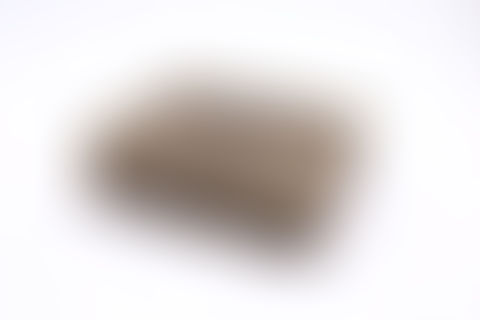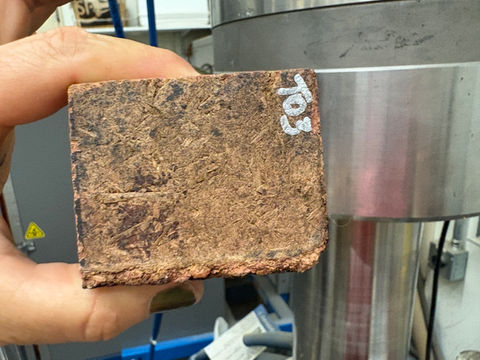
What is MykoBrick?
MykoBrick is a bio-composite made by pressing spent mushroom substrate, a waste byproduct of mushroom farming that combines mycelium—the root structure of fungi—with other agricultural waste such as sawdust and plant fibers. As the mycelium grows, it naturally binds cellulosic waste into a solid lightweight structure without the need for synthetic adhesives or high-energy processing. The bricks are then pressed and baked to kill the mycelium.
Our team is actively researching MykoBrick’s material performance, including:
-
Species composition
-
Compression strength
-
Moisture resistance
-
Fire resistance
Mycelium Meets Architecture: A New Way to Build
The goal is to develop a carbon-negative biodegradable alternative to conventional building materials like concrete, adobe, and synthetic insulation. MykoBrick represents a step toward circular design solutions that reduce waste, lower emissions, and reconnect architecture with living systems.
Mykobricks Are Carbon Sinks
Mycobricks are carbon negative, meaning that they store almost 40 kg of CO2 per cubic meter in contrast to the fabrication of concrete blocks that releases 200 kg of CO2 per cubic meter.
When calculated in relation to mass, Chris Maurer determined that “1.58 kg CO2e is stored in each kilogram of block produced."
Because many farmers including some in Yunnan burn agricultural waste, Mykobrick fabrication both stores carbon AND prevents its usual release into the atmosphere when burned. This is a two-fold gain.

Image from Livne et al., “Fungal Mycelium Bio-Composite Acts as a CO₂-Sink Building Material,” ACS Sustainable Chemistry & Engineering 10, no. 37 (2022). See also Chris Maurer, “Building with Mycotecture,” Myco-Stories (June 10, 2024).
How Strong Are Mykobricks?
Mykobricks aren’t just sustainable—they’ve shattered expectations and testing limits.
Don't Burn. Build!
Mykobricks begin from agricultural waste. Instead of burning waste in the fields, as is common practice, use that waste to grow edible mushrooms and then turn that spent mushroom substrate into mykobricks.
Most of the bricks shown here made by UC Davis Biodesign students started with spent mushroom substrate in the compost pile at Far West Fungi, a major organic mushroom grower in California.


In Yunnan for Mykos, we will be using spent mushroom substrate of locally grown species. We plan to fabricate the bricks and then run compression tests in both dry and humid conditions to ascertain compression strength, among other material properties.
Owing to the huge diversity and knowledge of edible fungal species in Yunnan, we hope over time to discover new species for creating excellent mycomaterials.

© 2025 by Mykos. Created on Wix Studio.






















